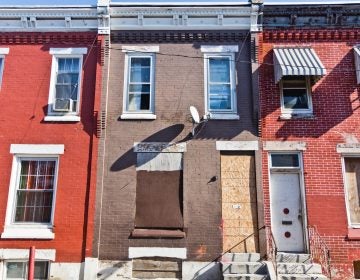Coalition gets data to help cut Philadelphia’s recidivism rate
The 24-page report provides a snapshot of these former inmates – their gender, race and what ZIP codes they’re expected to call home.

A bus leaves the correctional complex on State Road in Philadelphia. (Emma Lee/for NewsWorks)
The Philadelphia Reentry Coalition now has data to help support its mission of cutting the city’s recidivism rate.
On Tuesday, the group released a long-awaited report focused on thousands of inmates who returned to Philadelphia after their release from a county jail or state prison.
The 24-page report provides a snapshot of these former inmates – their gender, race and what ZIP codes they’re expected to call home. And, notably, recidivism rates from all inmates, whether they served at a county or state facility.
“Tracking recidivism has been difficult because individual agencies generally only track people who are leaving or returning to their own system,” Sharon Rosenberg, a coalition member and executive director at JEVS Human Services, said in a written statement.
Between 2012-2015, the last year for which data was available, between 24,000 and 26,000 men and women headed to Philadelphia each year after being released, according to the report.
And each year, between 8,000-9,000 of those former inmates — more than a third — were arrested at least once within a year of getting out.
The report defines recidivism as being rearrested within 12 months.
The Philadelphia Reentry Coalition hopes to use this data to help achieve its five-year goal of driving down the city’s recidivism rate 25 percent by the end of 2020.
That would translate to 2,000 fewer people being rearrested within a year after being released from a state prison.
For now, it’s unclear what specific steps the coalition will take to make the goal a reality.
“It’s much more a step toward more data-informed policy, than having arrived at the data that tells us what to do,” said Aviva Tevah, who directs the coalition, a collection of nonprofits, academics and government agencies.
In the meantime, Tevah said the coalition would continue working to build a strong network of service providers geared toward helping former inmates return to society.
“The big picture is that we’re able, collectively, to take advantage of all of the resources that we have within the city,” she said. “So that every returning citizen, every person who’s coming back to Philadelphia from incarceration, can connect with the most relevant, most useful resources.”
The majority of people who returned to Philadelphia after leaving a jail cell were African-American men originally arrested on drug and violence-related charges.
Many of them returned to a relatively small group of ZIP codes, including a handful of neighborhoods in North Philadelphia.
WHYY is your source for fact-based, in-depth journalism and information. As a nonprofit organization, we rely on financial support from readers like you. Please give today.





